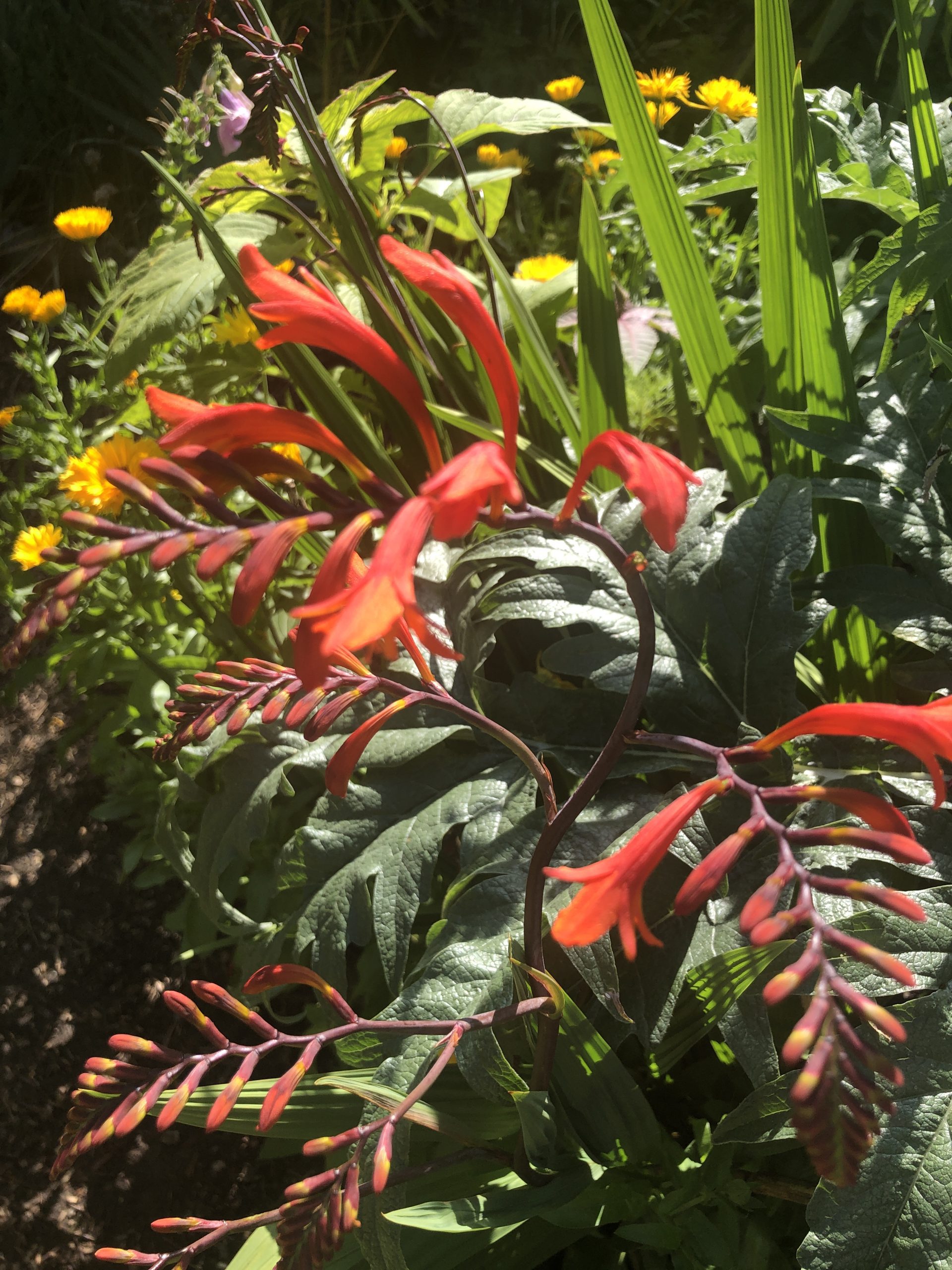Crocosmias, also known as montbretias, are beautiful flowering perennials that produce clusters of vibrant, trumpet-shaped flowers in shades of orange, red, and yellow. Here are some tips on how to maintain Crocosmias:
- Sunlight and location: Crocosmias thrive in full sun to partial shade. Choose a location in your garden that receives at least 6-8 hours of direct sunlight each day. They prefer well-draining soil but can tolerate various soil types.
- Watering: Crocosmias are fairly drought-tolerant once established but benefit from regular watering, especially during dry spells. Water deeply, ensuring the soil is moist but not waterlogged. Allow the top inch of soil to dry out between watering sessions.
- Mulching: Apply a layer of organic mulch, such as wood chips or straw, around the base of the plants. Mulching helps conserve soil moisture, suppresses weeds, and regulates soil temperature. Keep the mulch a few inches away from the stems to prevent rotting.
- Fertilization: Crocosmias generally don’t require heavy fertilization. However, you can apply a balanced slow-release fertilizer in early spring or use a liquid fertilizer diluted to half strength every few weeks during the growing season. This helps promote healthy growth and abundant flowering.
- Deadheading: To encourage continuous blooming and prevent the plant from self-seeding, remove faded flowers by cutting the stalks back to their base or where they meet the foliage. Deadheading also improves the overall appearance of the plant.
- Dividing: Crocosmias tend to multiply and form dense clumps over time. Dividing the clumps every 3-4 years in early spring or late summer helps maintain their vigor and promotes better flowering. Dig up the clumps, carefully separate the individual corms, and replant them at the appropriate spacing.
- Winter care: Crocosmias are generally hardy and can tolerate mild frost. However, in colder regions, it’s a good idea to protect the plants by mulching around the base with a layer of straw or leaves in late fall. This helps insulate the corms from freezing temperatures.
- Pest and disease control: Crocosmias are relatively resistant to pests and diseases. However, they can occasionally be affected by aphids or slugs. Monitor your plants regularly and take appropriate measures if you notice any infestations. Use organic pest control methods or consult a local garden center for suitable treatments.


